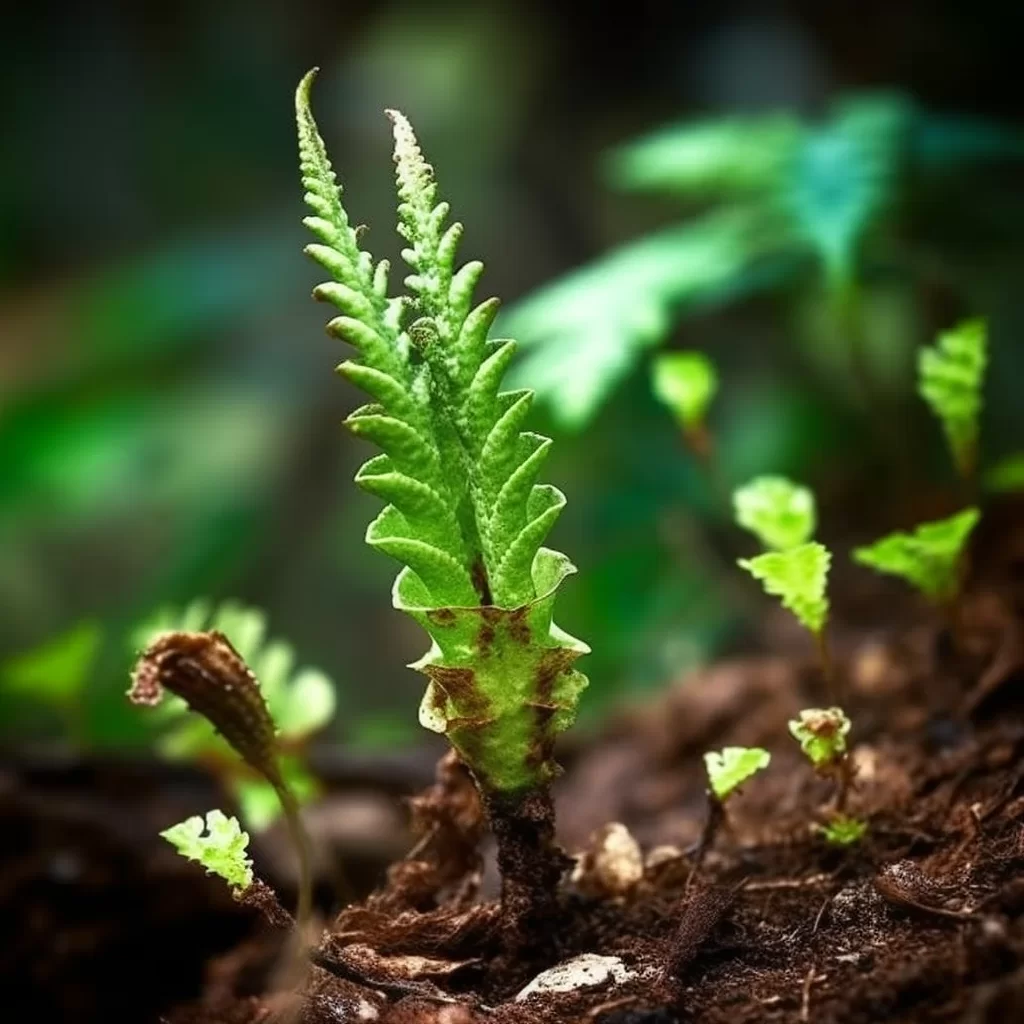Story of Day :
Contents
The Devil’s Backbone Plant: Complete Guide and Care Tips
Are you looking for a low-maintenance yet striking plant to add to your garden? Look no further than the devil’s backbone (Euphorbia tithymaloides).
This succulent shrub, also known as zigzag plant or Jacob’s ladder, is native to tropical regions of Central and South America.
Here’s everything you need to know about its care and cultivation.
Description
The devil’s backbone gets its name from the distinctive zigzag pattern of its stems.
The green stems grow up to 3 feet tall and are lined with small, oval-shaped leaves that range in color from light green to yellow-green.
In winter, the plant produces small clusters of red or pink flowers.
Light Requirements
The devil’s backbone prefers bright but indirect sunlight.
It can also tolerate some shade but will not thrive in deep shade.
To ensure even growth, rotate the pot regularly so that all sides receive equal light exposure.
Watering Needs
This succulent is drought-resistant and can survive long periods without water.
However, it should be watered regularly during warmer months when it is actively growing.
Allow the soil to dry out between waterings as overwatering can lead to root rot.
- During warm months: Water once a week or when soil feels completely dry by sticking your finger into soil up-to 1 inch down.
- During cold months : Water every two weeks
- Avoid watering on leaves otherwise it causes fungal diseases
Suitable Temperature Range
Euphorbia tithymaloides prefers warm temperatures between 60°F-80°F (15°C-27°C).
It can tolerate temperatures as low as 50°F (10°C) but is susceptible to damage from frost.
Keep it away from drafty windows and cold air currents.
Soil Requirements
The devil’s backbone prefers well-draining soil that is rich in organic matter.
A standard cactus/succulent mix works well, or you can create your own by mixing equal parts sand, perlite, and peat moss.
Fertilization
If your plant is actively growing, fertilize it once a month with a balanced liquid fertilizer diluted to half strength.
Do not fertilize during the winter months when the plant is dormant.
Propagation
The devil’s backbone can be propagated through stem cuttings taken in spring or summer.
Allow the cuttings to dry out for a few days before planting them in well-draining soil.
Water sparingly until new growth appears.
Toxicity warning
While this plant boasts beauty with its striking stems and flowers ,It should be kept away from pets and young children because of its milky sap which contains toxic chemicals that can cause skin irritation if touched or ingested..
In Conclusion
- Euphorbia tithymaloides requires bright but indirect sunlight
- Suitable temperature range: 60°F-80°F (15°C-27°C)
- Ideal soil: well-draining soil that is rich in organic matter
- Fertilizer: Balanced liquid fertilizer diluted at half-strength once a month during active growth months only(avoid during dormant winter period)
- To propagate , take stem cuttings during spring/summer and grow in well-draining soil.
- Lastly, keep pets and young children away from the plant due to its toxic sap.
The devil’s backbone is an excellent choice for gardeners who want a low-maintenance yet visually striking plant.
With proper care, it can thrive for years to come.
